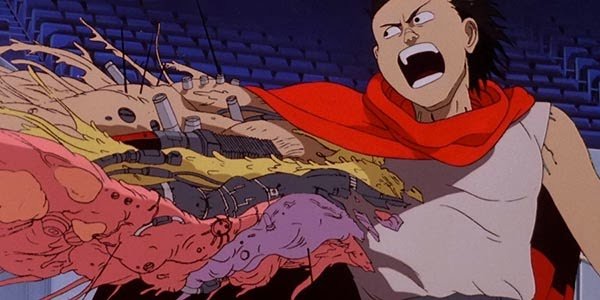On the Compaction of Trash in a Death Star
Posted: 2017-12-19 03:26pm
Joshua Tyree wrote:I maintain that the trash compactor onboard the Death Star in Star Wars is implausible, unworkable, and moreover, inefficient.
The Trash Compactor Debate turns on whether the Death Star ejects its trash into space. I, for one, believe it does. Though we never see the Death Star ejecting its trash, we do see another Empire ship, the so-called Star Destroyer, ejecting its trash into space. I therefore see no reason to suspect that Empire protocol dictating that trash be ejected into space would not apply equally to all Empire spacecraft, including the Death Star.
Slipcase store
To celebrate fifty groundbreaking issues of McSweeney’s Quarterly Concern, we’ve created a breathtaking, vanishingly limited slipcased edition of McSweeney’s 50. This special slipcased edition is...
The Death Star clearly has a garbage-disposal problem. Given its size and massive personnel, the amount of waste it generates — discarded food, broken equipment, excrement, and the like — boggles the imagination. That said, I just cannot fathom how an organization as ruthless and efficiently-run as the Empire would have signed off on such a dangerous, unsanitary, and shoddy garbage-disposal system as the one depicted in the movie.
Here are the problems, as I can ascertain them, with the Death Star’s garbage-disposal system:
1. Ignoring the question of how Princess Leia could possibly know where the trash compactor is, or that the vent she blasts open leads to a good hiding place for the rescue crew, why are there vents leading down there at all? Would not vents leading into any garbage-disposal system allow the fetid smell of rotting garbage, spores, molds, etc., to seep up into the rest of the Death Star? Would not it have been more prudent for the designers of the Death Star to opt for a closed system, like a septic tank?
2. Why do both walls of the trash compactor move towards each other, rather than employing a one-movable-wall system that would thus rely on the anchored stability, to say nothing of the strength, of the other, non-moving wall, to crush trash more effectively?
Food bundle store
Four McSweeney's cookbooks, together in one low-priced bundled. This bundle includes: Toro Bravo by John Gorham and Liz Crain Mission Street Food by Anthony Mint and Karen Leibowitz All Under...
3. Why does the trash compactor compact trash so slowly, and with such difficulty, once the resistance of a thin metal rod is introduced? Surely metal Death Star pieces are one of the main items of trash in need of compacting. It thus stands to reason that the trash compactor should have been better designed to handle the problem of a skinny piece of metal. (And while I hate to be the sort of person who says I told you so, I’d be remiss if I didn’t point out that a one-movable-wall system would have improved performance.)
4. Why does the trash compactor only compact trash sideways? Once ejected into space, wouldn’t the flattened, living-room-sized, and extremely solid panes of trash that result from such a primitive, unidirectional trash compactor pose serious hazards for Empire starships in the vicinity?
5. And what of the creature that lives in the trash compactor? Presumably, the creature survives because the moving walls do not extend all the way to the floor of the room, where the liquid is. After all, if the walls reached the floor, the creature would be killed each time trash is compacted. The design employed on the Death Star must allow the organic trash to filter down to the bottom, where the parasitic worm-creature devours it. But what happens when heavier pieces of non-organic trash fall down there? Would such trash not get wedged under the doors, causing them to malfunction? Do stormtroopers have to confront the creature each time they retrieve pieces of un-compacted trash?
6. Why not have separate systems for organic and inorganic waste, thus allowing full compaction of the inorganics and a closed sanitary system for the organics?
Nonfiction bundle store
Nine books from the McSweeney's nonfiction shelf, from personal essays to criticism to food writing. This bundle includes: More Curious by Sean Wilsey White Girls by Hilton Als Maps and...
7. Why does the Empire care, anyway, about reducing its organic garbage output? Are we to believe that the architects of the Death Star, a group of individuals bent on controlling the entire known universe, are also concerned about environmental issues? Would organic garbage rot in space? So what? Furthermore, why has the Empire gone to the trouble of acquiring a frightening parasitic worm-creature and having it eat all organic trash, especially given the aforementioned flaws in the design of the compactor and overall maintenance hassles?
8. Personally, were it up to me, I would have designed special garbage ships instead of employing a crude, cumbersome, and inefficient (to say nothing of unsanitary) compactor-worm combo to deal with the trash.
9. If the Empire insists on ejecting trash into space, why do they bother compacting it? Space is infinite, is it not? In such an environment, it hardly matters what size the trash is. In fact, a persuasive argument can be made that it’s actually better for the trash to take up more space, so that it appears on radar systems as something for Empire ships to avoid. Compacted trash creates smaller chunks of harder trash that would undoubtedly cause serious damage to Empire starships. And needless to say, damage to starships would, in turn, create yet more hassles and headaches for the Empire.
Please understand, gentle reader, I am all for creating hassles and headaches for the Empire. I just doubt that the Empire would have created so many for itself. Q.E.D.
